|
Most snakes have quite long, thin, sharp, and recurved teeth for catching and eating prey. These teeth are firmly anchored to the anterior bone on the lower jaw and the upper jawbone. Just like sharks and crocodiles, snakes replace their teeth throughout their life. Teeth are shed in stages and the snake will still have enough teeth present to eat, even when some are shed.
|
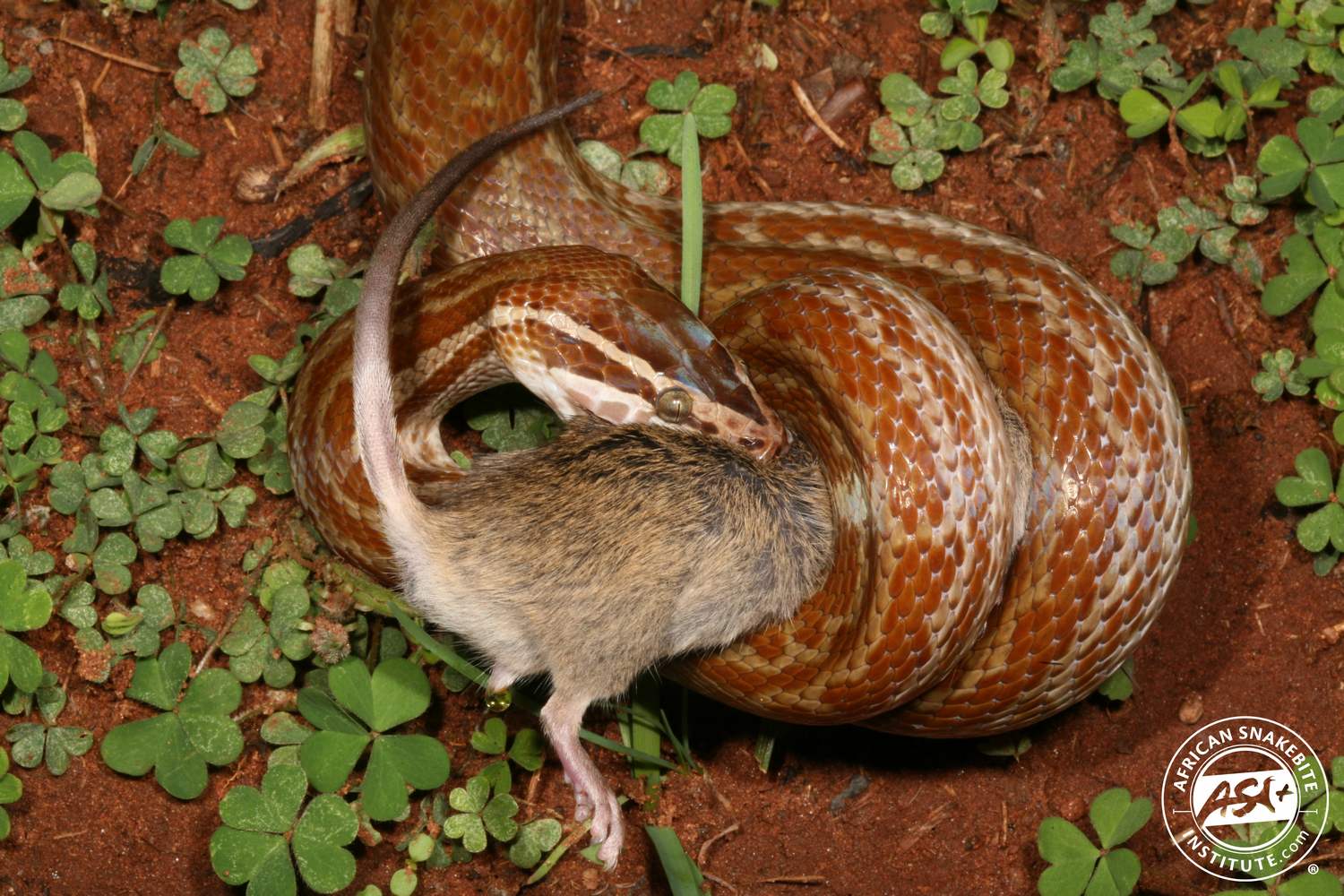 |
|
As snakes do not have hands, they use their teeth to hold onto prey like this Brown House Snake.
|
|
|
|
Snakes and other Reptiles of Zambia and Malawi will be launched in September 2021 and is by far the most significant herpetological book published in Southern Africa in recent years.
It is a 376 page book with close on 400 photographs and illustrations, covering both Zambia and Malawi – a region that has been neglected in the past with very little published.
The African Snakebite Institute is offering a pre-publication special for autographed copies – 10% off the selling price of R430.00 and free delivery within South Africa.
|
|
|
| Order here |
|
|
|
Venomous snakes like mambas, cobras and the adders have fangs in addition to teeth. The fangs are situated on the upper jawbone. Mambas and cobras have relatively short, fixed fangs in the front of the mouth and their fangs average around 5 mm in length. These fangs are hollow like hypodermic needles and the venom flows from the venom gland via a duct and down, through the center of the fang. Adders in the genus Bitis, such as the Puff Adder and Gaboon Adder, have large, hinged fangs in the front of the mouth that are folded against the roof of the mouth when not in use. When the snake strikes, the fangs swing forward and are darted into their prey or attacker. Their fangs are also hollow, and the fangs of the Puff Adder can exceed 2 cm in length while the Gaboon Adder has the largest fangs of any snake in Africa – their fangs can exceed 4 cm in length.
|
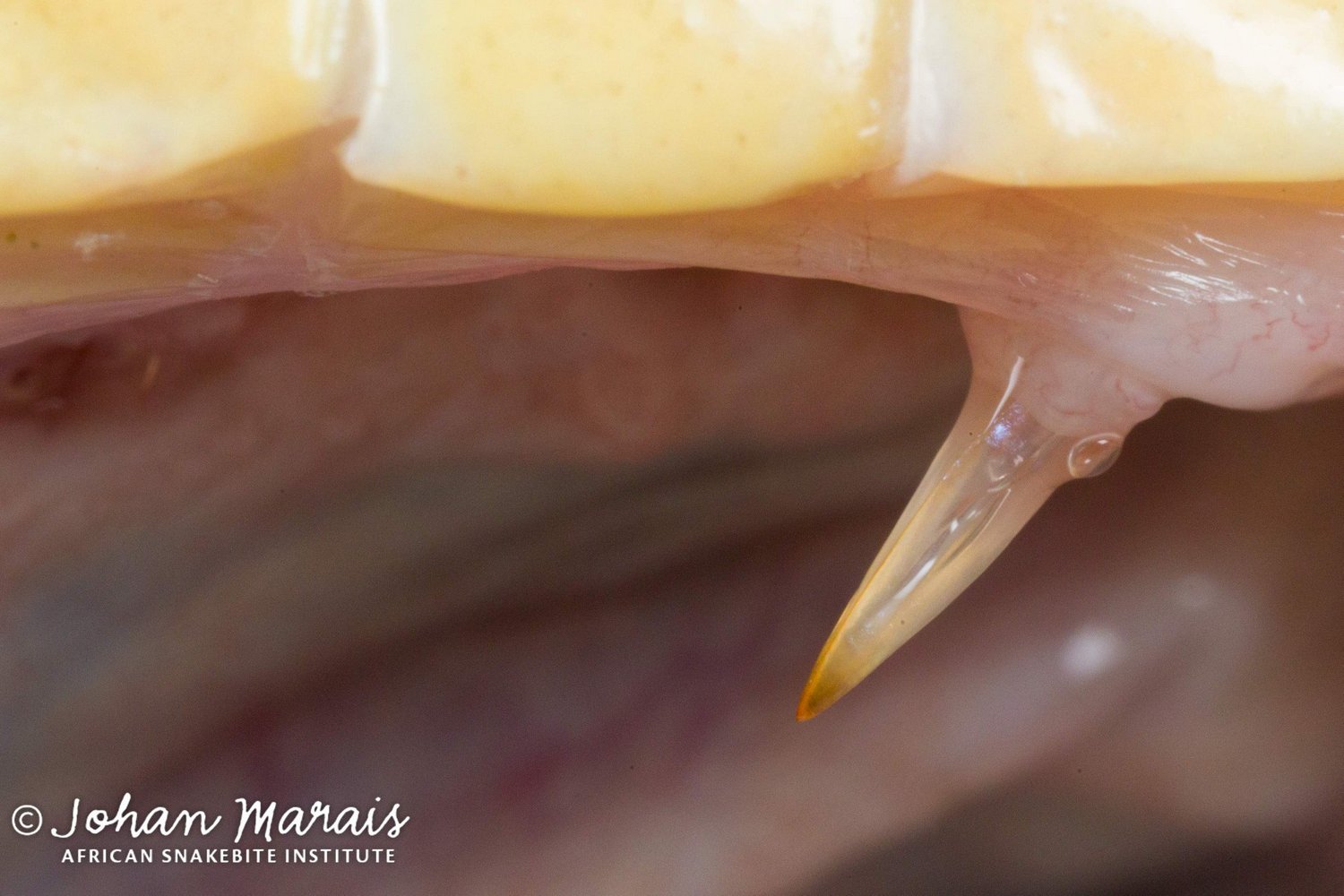 |
|
Short, fixed fangs in the front of the mouth of a Cape Cobra.
|
|
|
|
Back-fanged snakes such as the Boomslang, Vine Snake and Herald Snake have relatively short fangs that are situated quite far back in the mouth, often below the eye or even further back in the mouth. Unlike mamba and cobra fangs, the back-fanged snakes do not have hollow fangs but rather have a groove down the front of the fang. Venom runs from the venom gland down the grooves of the fang. Because of the position of the fangs in back-fanged snakes it is often incorrectly believed that they cannot easily bite and need to get hold of a person’s small finger. This is not the case as these snakes can open their mouths up to about 170 degrees and can easily bite an arm or a leg.
|
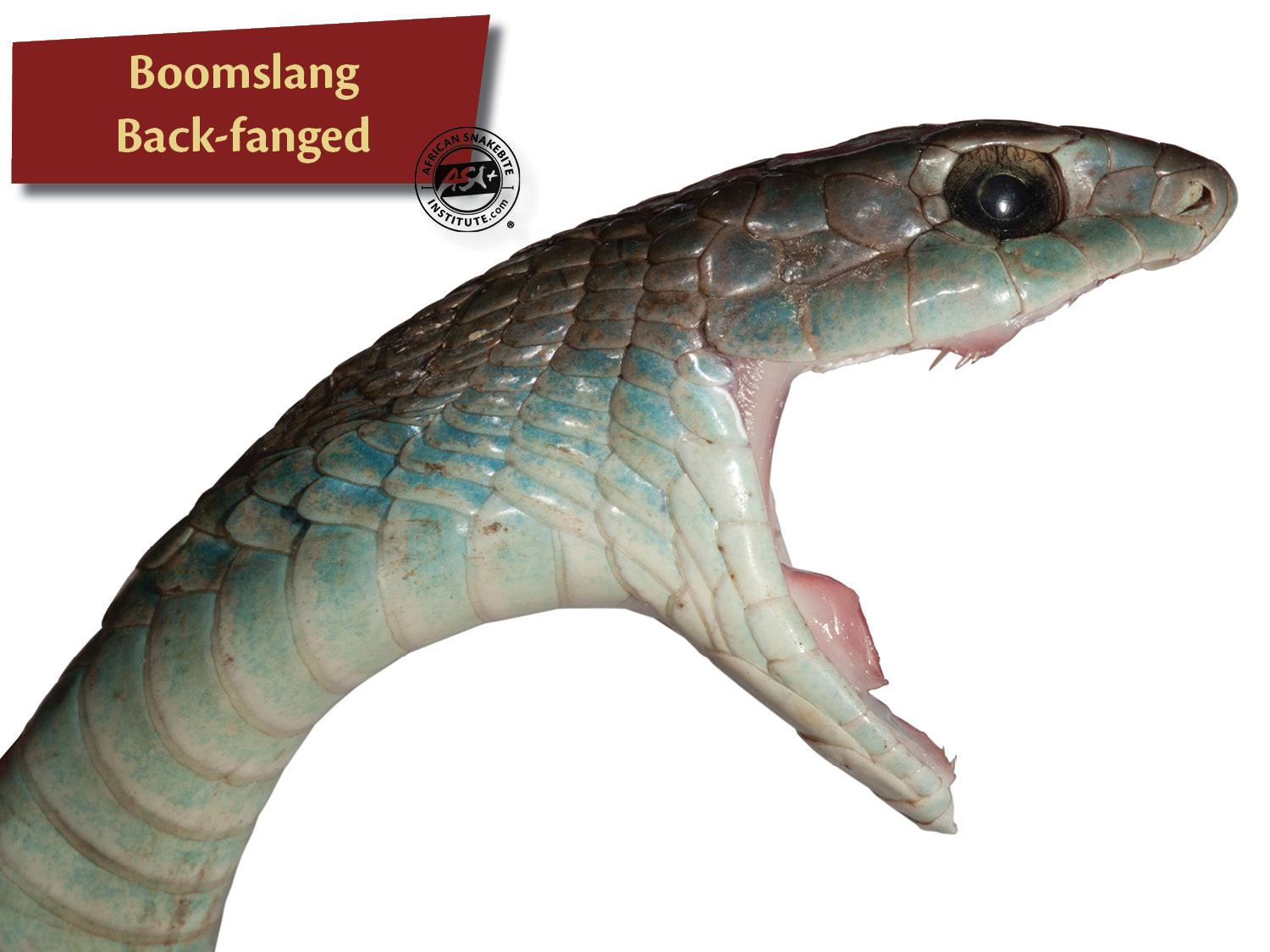 |
|
Back-fanged snakes, like this Boomslang, have fangs situated quite far back in the mouth, often below the eye or even further back in the mouth.
|
|
|
|
Still our best selling T-shirt
What doesn't kill you makes you stronger...
160g pure cotton tees.
Available in sizes small to 3XL
Price R200.00
|
|
|
| Order here |
|
|
|
Bibron’s Stiletto Snake has unusual fangs – they are quite long, are situated in the front of the mouth and have limited movement. Even when the mouth is closed this snake can protrude them out of the sides of the mouth and may use them in a stabbing action when underground. It is the only snake in our region that snake handlers cannot safely hold behind the head.
|
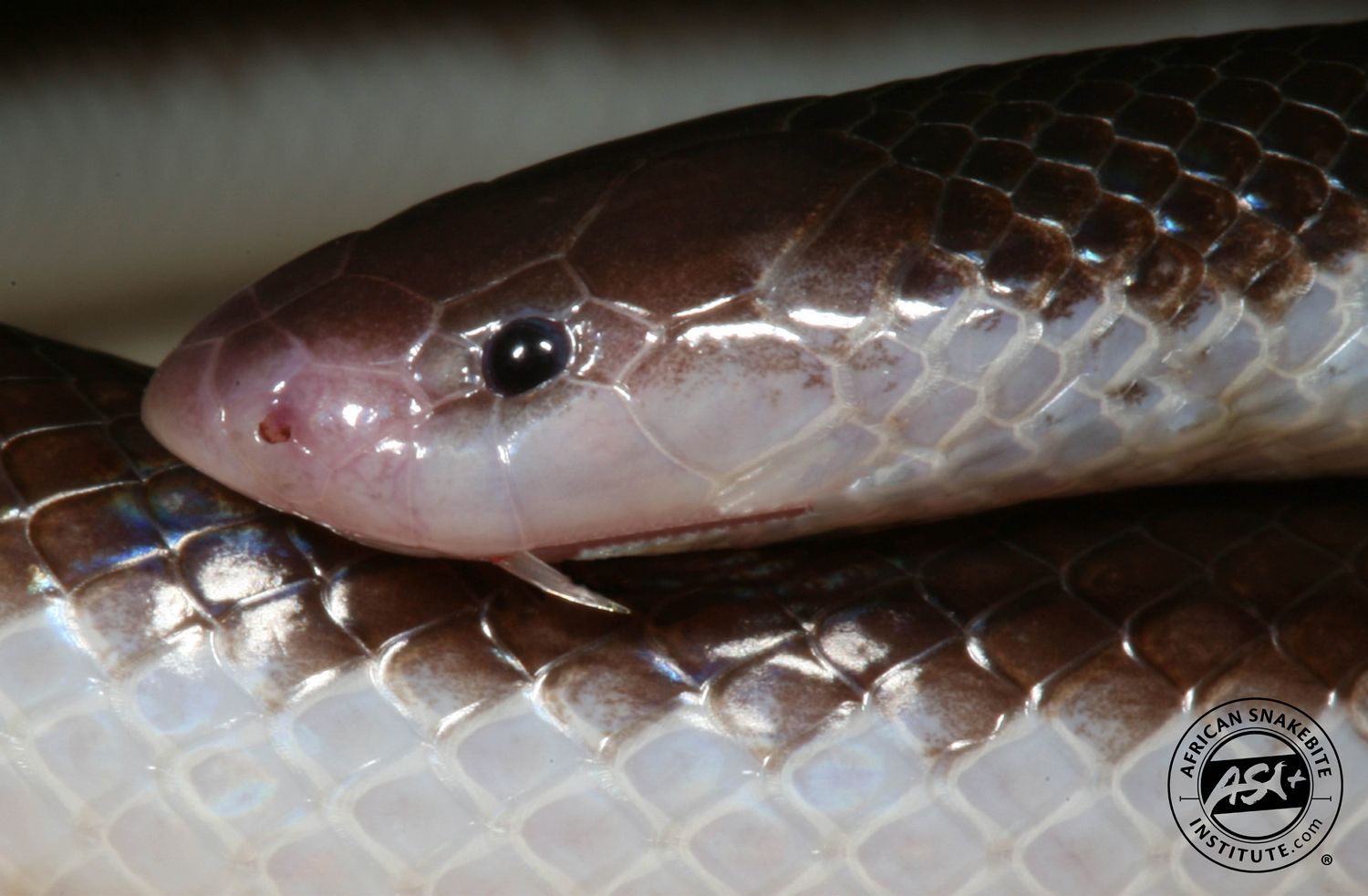 |
|
Stiletto snakes can protrude the fangs out the side of the mouth even when the mouth is closed.
|
|
|
|
Like teeth, fangs are also shed and replaced throughout the life of a venomous snake. All venomous snakes have four to six fangs in different stages of development on either side of their mouth. As the active fangs reach the end of their life, a second fully developed fang will be moved forward and will already be connected to the venom duct. Venomous snakes shed their fangs alternatively, so even when a fang is shed, there will be an active fang on the other side of the mouth.
|
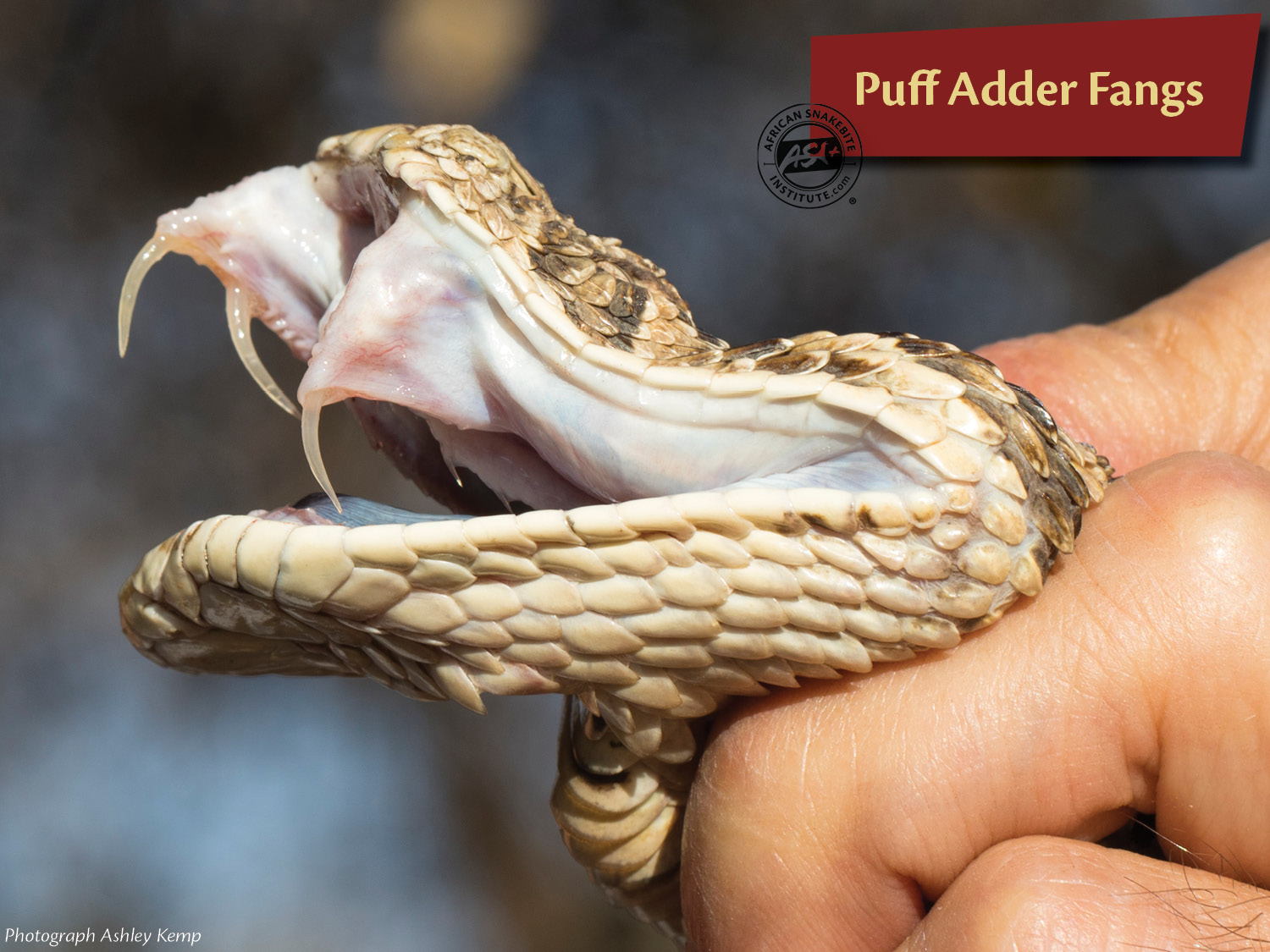 |
|
Note this Puff Adder has two fangs on its right hand side. When the front fang sheds, the second fang will move into place and connect to the venom duct.
|
|
|
|
Depending on dentition, snakes are grouped as follows:
Aglyph (lacking grooves) – Aglyphous snakes do not have fangs and their teeth are all solid and similar in shape. All of our snakes that fall into this classification ‘aglyphous snakes' in this region are considered non-venomous. This group includes species like the Southern African Python, Brown House Snake, Mole Snake, the blind snakes and thread snakes.
|
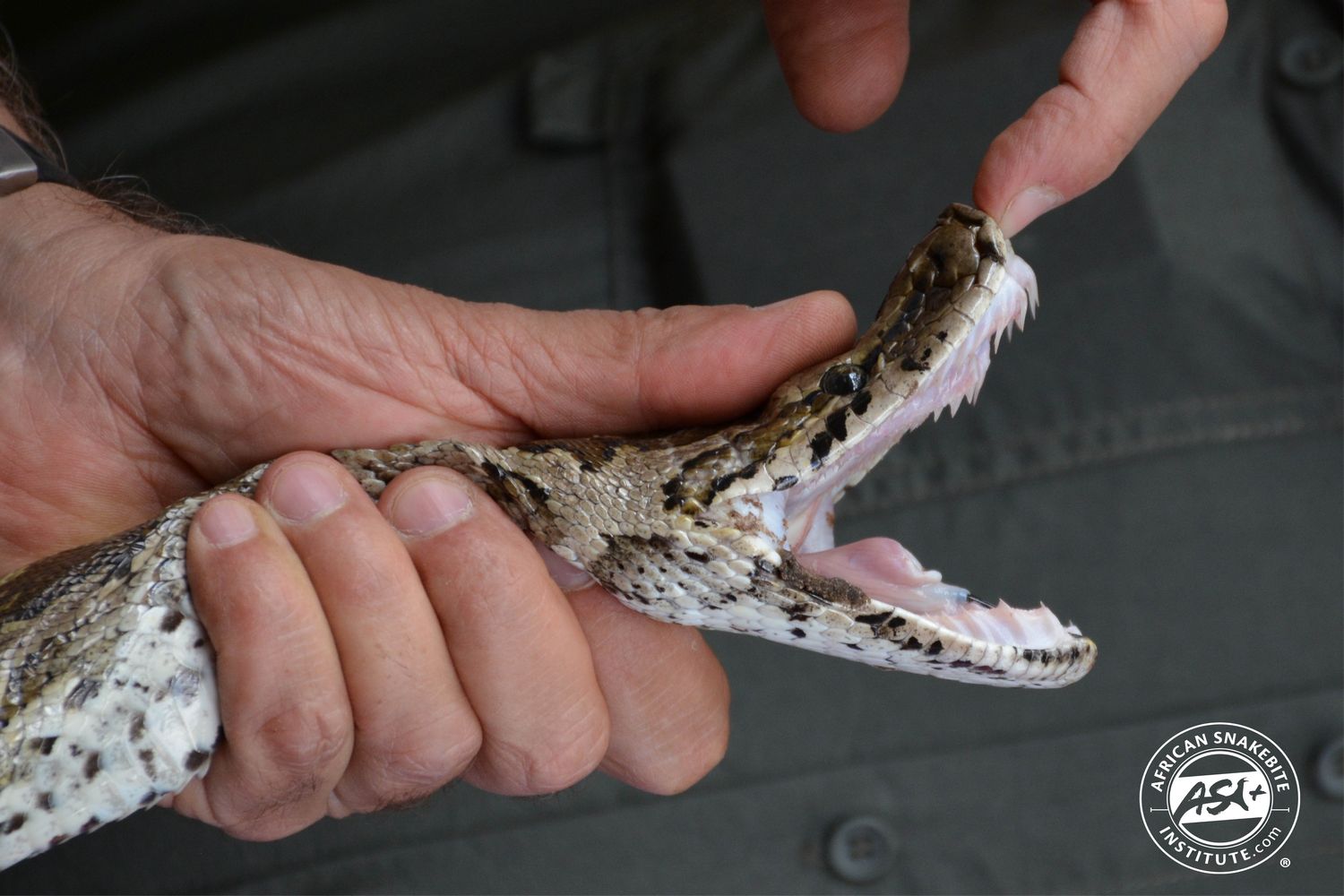 |
|
Southern African Pythons have around 84 recurved teeth in their mouths.
|
|
|
|
JM150 Snake Tong
The best-selling snake tong in Africa...
The 1.5 m tongs are by far our most popular snake tong for both discerning corporate and private clients. This tong is ideal for removing problem snakes, especially on mines, game farms and game lodges. The extra 50 cm (compared with the JM100) keeps the snake further away from the handler and is thus far safer.
Price R1295.00
|
|
|
| Order here |
|
|
|
Opisthoglyphous (or back-fanged) snakes have enlarged, grooved fangs in the back of the mouth and need to hang onto their prey and chew in order to envenomate effectively. While most species are mildly venomous (e.g., the Herald Snake and Eastern Tiger Snake), two have accounted for deaths. The famous herpetologists Karl Schmidt died after being bitten by a Boomslang (which at the time was thought to be mildly venomous) and Robert Mertens succumbed to a bite from a vine snake.
Proteroglyph (forward grooved-fanged) – Proteroglyphous snakes have short, fixed fangs in the front of the mouth. These fangs are hollow and are unique to the elapids. Snakes in this group include the Black Mamba and Cape Cobra, which are considered the most venomous snakes in southern Africa. It also includes our spitting snakes.
|
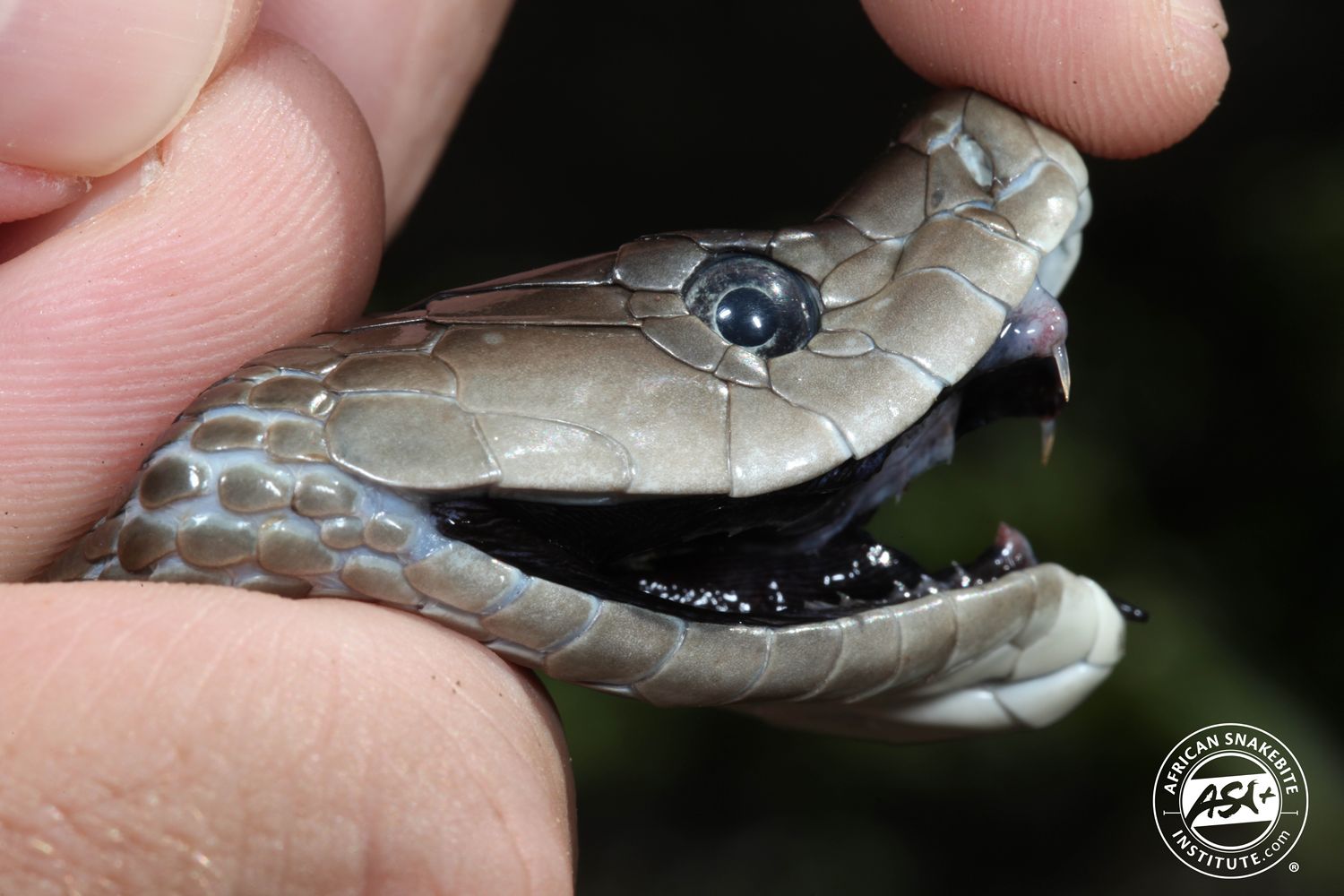 |
|
Proteroglyphous snakes have short, fixed fangs in the front of the mouth like this Black Mamba.
|
|
Solenoglyph (pipe grooved) – Solenoglyphous snakes have large, hinged fangs (up to half the length of the skull) in the front of the mouth. The fangs fold back against the roof of the mouth when not in use, and when the snake strikes, the mouth opens as wide as 170 degrees and the fangs swing forward. These fangs are hollow and, in southern Africa, are unique to the adders.
When it comes to snakebites from venomous snakes, a bite might result in two distinct fang punctures, various punctures from fangs and teeth or even just a little scratch. Doctors rarely benefit from looking at bite marks, as fang and teeth punctures say little about the severity of a snakebite. In a recent Boomslang bite the victim had a single small scratch but needed antivenom.
|
|
|
|
|
|
|